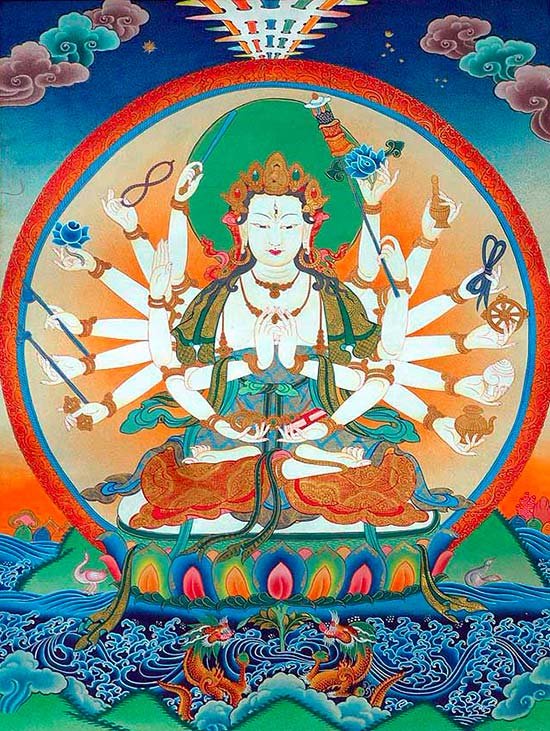Maha Prajnaparamita Sastra
by Gelongma Karma Migme Chödrön | 2001 | 941,039 words
This page describes “avadana” as written by Nagarjuna in his Maha-prajnaparamita-sastra (lit. “the treatise on the great virtue of wisdom”) in the 2nd century. This book, written in five volumes, represents an encyclopedia on Buddhism as well as a commentary on the Pancavimsatisahasrika Prajnaparamita.
Seventh aṅga (member): Avadāna
The avadānas ‘stories’ are amusing little tales (mṛdukathā) such as there are among people in the world. For example:
In the Madhyāgama: the Tch’ang a-po-t’o-na (Dīrghāvadāna);[1]
In the Dīrgāgama: the Ta a-po-t’o-na (Mahāvadāna),[2]
In the Vinaya: the Yi-eul a-po-t’o na (Koṭikarṇāvadāna)[3] and the Eul-che-yi a-po-t’o-na (Koṭiviṃśāvadāna),[4]
In the two hundred and fifty rules (śikṣāpada): the Yu a-po-t’o-na (Chandāvadāna) in one book and the P’ou-sa a-po-t’o-na (Bodhisattvāvadāna) in one book.[5]
There are innumerable avadānas of this kind.
Footnotes and references:
[1]:
Dīrghāyūrājāvadāna of the Madhyamāgama, no. 72, T 26, k. 17, p. 532c539b; Upakkilesasutta of the Majjhimanikāya, no. 128, III, p. 152–162.
[2]:
Mahāvadāna (ed. E. Waldschmidt, 19523) of the Dīrghāgama, vol. 1, T 1, k. 1, p. 1b–10c; Mahāpadānasuttanta of the Dīghanikāya, no. 14, II, p. 1–54.
[3]:
For the Koṭikarṇāvadāna, see references mentioned above, p. 546F, n. 3 and the study by E. Waldschmidt, Zur Śroṇakoṭikarṇa-Legende, in Von Ceylan bis Turfan, p. 203–225.
[4]:
For Śroṇa Koṭiviṃśa already mentioned several times (p. 1387F, 1681F, 1894F) see references to the Vinayas, p. 1389F, n. The original Sanskrit of the avādana in the Mūlasarv. Vin. is in Saṃghabheda, II, p. 1340147, corresponding to T 1450, k. 16, p. 184b26; k. 17, p.187b15. See also E. Waldschmidt, Ein Beitrag zur Überlieferung vom Sthavira Śroṇa Koṭiviṃśa, Mélanges d’indianisme á mémoire de Louis Renou, 1968, p. 773–787; A contribution to our knowledge of Sthavira Śroṇa Koṭiviṃśa, in S. K. De Memorial Volume, 1972, p. 107–116.
[5]:
For the avadānas of Chanda and the bodhisattva, see A. Hirakawa, Ritzuzö no kenkyu, 1960, p. 389–394 and 398–402. These two individuals appear in the Vibhangas of various Vinayas, but it does not seem that special sections (pou) were devoted to them.
